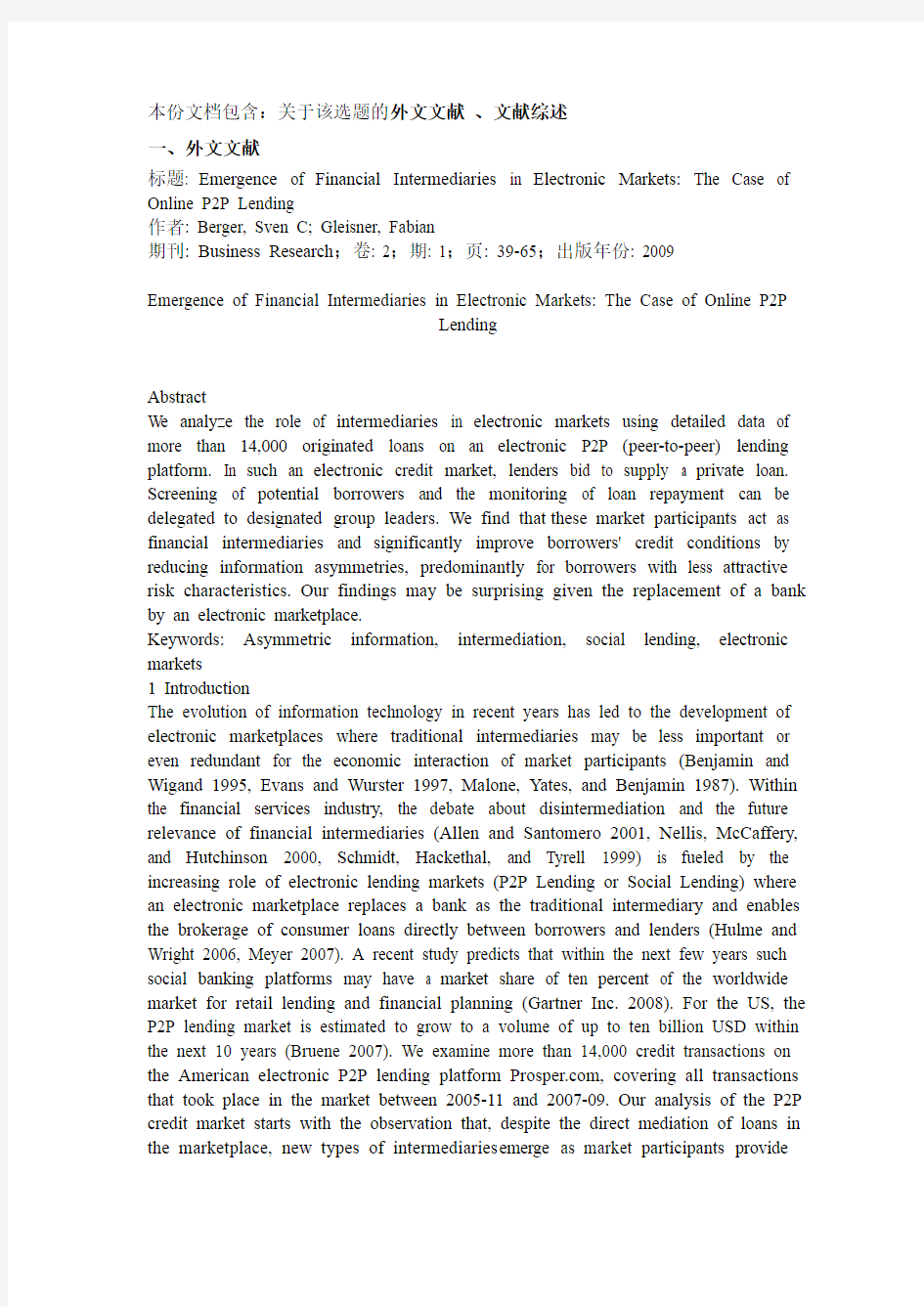
P2P 网络借贷文献综述及外文文献互联网金融
- 格式:doc
- 大小:96.00 KB
- 文档页数:19


本份文档包含:关于该选题的外文文献、文献综述
一、外文文献
标题: Emergence of Financial Intermediaries in Electronic Markets: The Case of Online P2P Lending
作者: Berger, Sven C; Gleisner, Fabian
期刊: Business Research;卷: 2;期: 1;页: 39-65;出版年份: 2009 Emergence of Financial Intermediaries in Electronic Markets: The Case of Online P2P
Lending
Abstract
We analyze the role of intermediaries in electronic markets using detailed data of more than 14,000 originated loans on an electronic P2P (peer-to-peer) lending platform. In such an electronic credit market, lenders bid to supply a private loan. Screening of potential borrowers and the monitoring of loan repayment can be delegated to designated group leaders. We find that these market participants act as financial intermediaries and significantly improve borrowers' credit conditions by reducing information asymmetries, predominantly for borrowers with less attractive risk characteristics. Our findings may be surprising given the replacement of a bank by an electronic marketplace.
Keywords: Asymmetric information, intermediation, social lending, electronic markets
1 Introduction
The evolution of information technology in recent years has led to the development of electronic marketplaces where traditional intermediaries may be less important or even redundant for the economic interaction of market participants (Benjamin and Wigand 1995, Evans and Wurster 1997, Malone, Yates, and Benjamin 1987). Within the financial services industry, the debate about disintermediation and the future relevance of financial intermediaries (Allen and Santomero 2001, Nellis, McCaffery, and Hutchinson 2000, Schmidt, Hackethal, and Tyrell 1999) is fueled by the increasing role of electronic lending markets (P2P Lending or Social Lending) where an electronic marketplace replaces a bank as the traditional intermediary and enables the brokerage of consumer loans directly between borrowers and lenders (Hulme and Wright 2006, Meyer 2007). A recent study predicts that within the next few years such social banking platforms may have a market share of ten percent of the worldwide market for retail lending and financial planning (Gartner Inc. 2008). For the US, the P2P lending market is estimated to grow to a volume of up to ten billion USD within the next 10 years (Bruene 2007). We examine more than 14,000 credit transactions on the American electronic P2P lending platform , covering all transactions that took place in the market between 2005-11 and 2007-09. Our analysis of the P2P credit market starts with the observation that, despite the direct mediation of loans in the marketplace, new types of intermediaries emerge as market participants provide